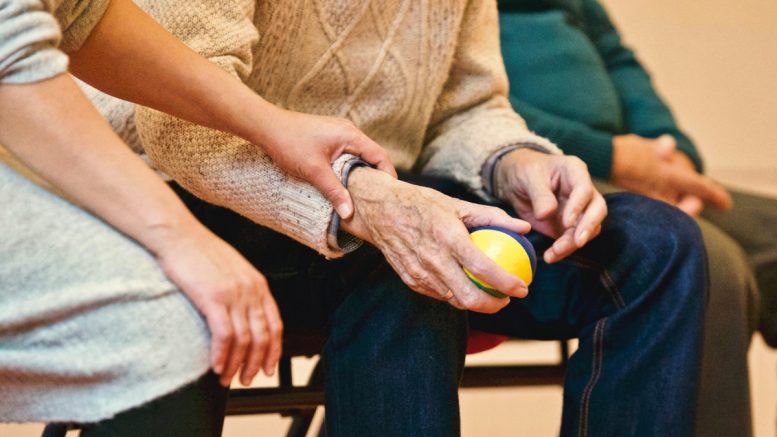Every year since 1992, the UK has marked April as ‘Stress Awareness Month’ with the aim of raising public awareness of both the causes and cures of stress – a feeling that has ballooned over the past year due to the coronavirus pandemic.
Indeed, the Mental Health Foundation estimates 74 per cent of UK adults felt so stressed at some point over the last 12 months that they became overwhelmed or unable to cope. Furthermore, recent research by the Stress Management Society found that 65 per cent of people in the UK have felt more stressed since the COVID-19 restrictions began in March 2020.
Put simply, stress is one of the great public health challenges of our time, yet it still isn’t being taken as seriously as physical health concerns, despite being a key driver in exacerbating mental health problems such as anxiety and depression.
Reflecting on the last year, it has become clearly evident all sectors of the economy were, and still are, significantly impacted by coronavirus, but arguably none more so than the social and healthcare sectors. For those working, residing and recovering in these areas, stress has been commonplace for varying reasons. For the elderly and vulnerable, in particular, stress can be triggered by what we call the three plagues of care; loneliness, boredom and helplessness.
With the Stress Management Society’s theme for Stress Awareness Month 2021 being ‘Regaining Connectivity, Certainty and Control’, we want to highlight how technology can help combat these ‘plagues’ through the power of human connection.
Stress in Care Homes
In a care home, the two major causes of stress for residents are admissions and illness. First, let’s look at the prior. The hours leading up to and after a resident’s admission into a social care setting can, plausibly, be very stressful. While the family of the resident may initially be present for the move and help them to settle into their new environment, once they have left, the resident may begin to feel socially isolated. Even if the care home has a CQC rating of ‘Outstanding‘ and the carers are adept at looking after the individual’s needs, the individual will still be conscious their family is no longer with them. This is where the aforementioned three plagues can begin to manifest. The solution? Technology.
Technology of Stress Management
We are extremely fortunate to live in an age where technological advancements are constantly empowering people to live better, healthier lives. For instance, there are handheld devices on the market that promote and encourage social interaction with loved ones. Specifically tailored to social and healthcare settings, these simplified tablets enable residents to stay connected in real-time, through one-touch video and audio calls. Equipped with such a device when moving into the care home, the resident will no longer feel disconnected from family and friends between visitation. Now, when the family leaves the resident following admission, they have the ability to tap a screen and instantaneously be talking with them before they’ve even pulled out of the care home’s driveway.
The option of having a tool that offers real-time interaction with the people who residents care most about, on a 24/7 basis, provides reassurance and calmness, thereby eliminating stress. This type of smart technology can also help reduce stress and anxiety around illness among residents in care settings when they need to be admitted to hospital. In these unfortunate instances, residents can be left confused and frightened by the unpleasant experience of the sudden change of scenery, all while feeling unwell.
With handheld smart technology, the resident or a care home staff member can connect them with their family swiftly, through one-touch features. The peace of mind of being able to hear and/or see their loved ones while on route to the hospital cannot be understated. The psychological reassurance of their family being able to virtually hold their hand during the transitional period from care home to hospital, is critical to easing nerves and stressful triggers.
Families can even liaise with clinicians virtually through the tablet about the resident’s health and next steps upon arrival at the hospital, offering reassurance to them too, while the resident settles into their new surroundings. A problem shared is a problem halved, particularly for those who are elderly and vulnerable.
Overall, stress can be a minefield, with unexpected triggers being set off at any moment. While we all experience stress throughout our everyday lives, we now have more solutions to subside or even eliminate it entirely in certain situations. Smart technology is one of those solutions. Utilising devices that are specifically researched and designed to curb stress through promoting human connection and interaction, is one of the most powerful tools we have at our disposal. We’re no longer getting a glimpse of the future for technological solutions that provide a better quality of life. They are here, now.
If we, as a sector, are serious about reducing stress and promoting healthier, happier lives for residents, whose stress triggers can be compounded if not dealt with, then we must look towards championing human connection through smart technology.
Stuart Solomons is the founder of Ernie Connects, a free, fully integrated, COVID-proof communications platform developed specifically for older people. Via an innovative, handheld device residents and patients can stay connected in real-time, through one-touch video and audio calls.





